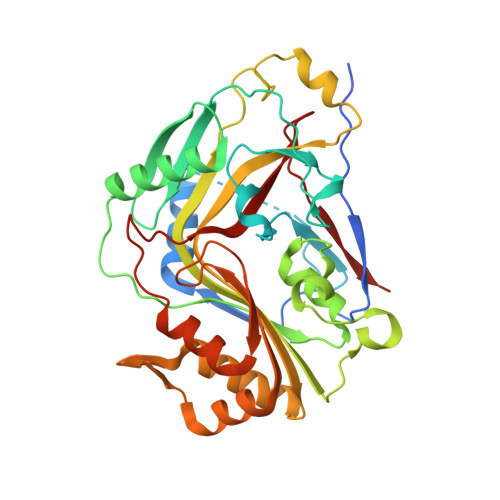Distant relatives of a eukaryotic cell-specific toxin family evolved a complement-like mechanism to kill bacteria.
Abrahamsen, H.L., Sanford, T.C., Collamore, C.E., Johnstone, B.A., Coyne, M.J., Garcia-Bayona, L., Christie, M.P., Evans, J.C., Farrand, A.J., Flores, K., Morton, C.J., Parker, M.W., Comstock, L.E., Tweten, R.K.(2024) Nat Commun 15: 5028-5028
- PubMed: 38866748
- DOI: https://doi.org/10.1038/s41467-024-49103-5
- Primary Citation of Related Structures:
8G32 - PubMed Abstract:
Cholesterol-dependent cytolysins (CDCs) comprise a large family of pore-forming toxins produced by Gram-positive bacteria, which are used to attack eukaryotic cells. Here, we functionally characterize a family of 2-component CDC-like (CDCL) toxins produced by the Gram-negative Bacteroidota that form pores by a mechanism only described for the mammalian complement membrane attack complex (MAC). We further show that the Bacteroides CDCLs are not eukaryotic cell toxins like the CDCs, but instead bind to and are proteolytically activated on the surface of closely related species, resulting in pore formation and cell death. The CDCL-producing Bacteroides is protected from the effects of its own CDCL by the presence of a surface lipoprotein that blocks CDCL pore formation. These studies suggest a prevalent mode of bacterial antagonism by a family of two-component CDCLs that function like mammalian MAC and that are wide-spread in the gut microbiota of diverse human populations.
Organizational Affiliation:
Department of Microbiology & Immunology, The University of Oklahoma Health Sciences Center, Oklahoma City, OK, USA.




















